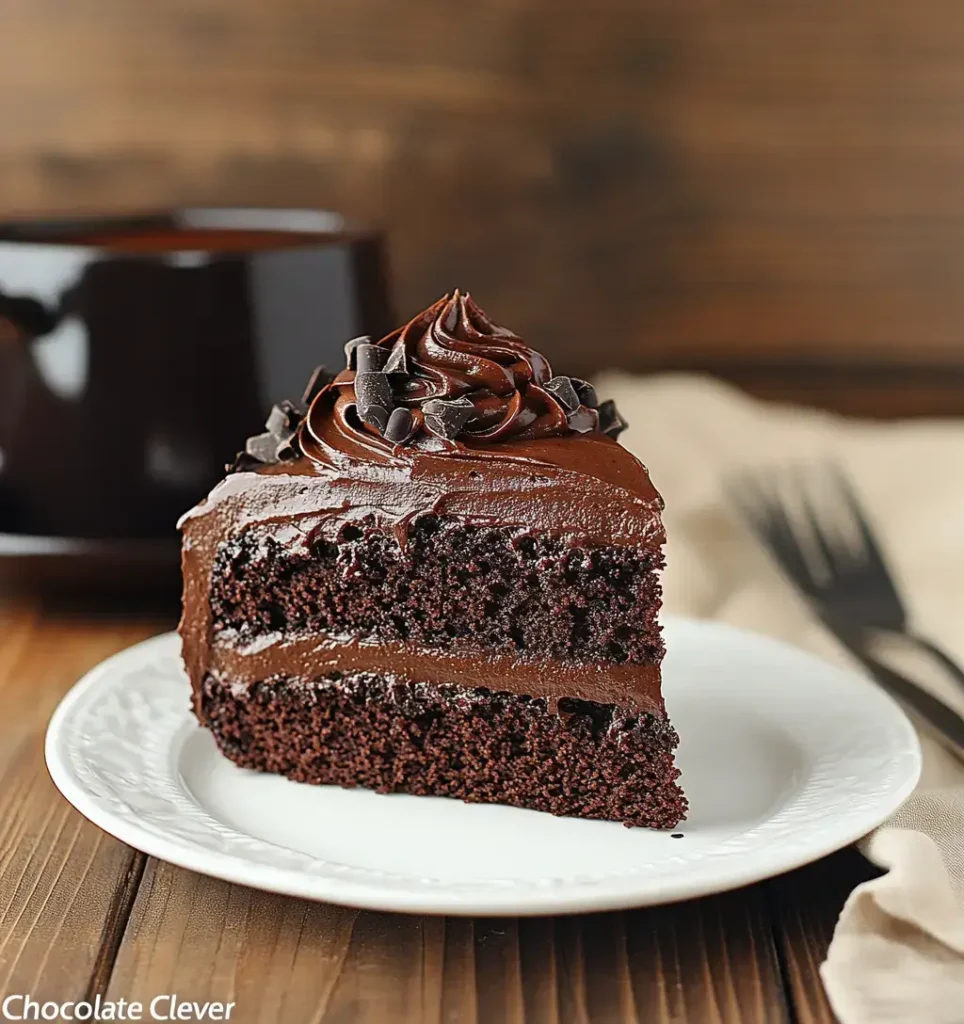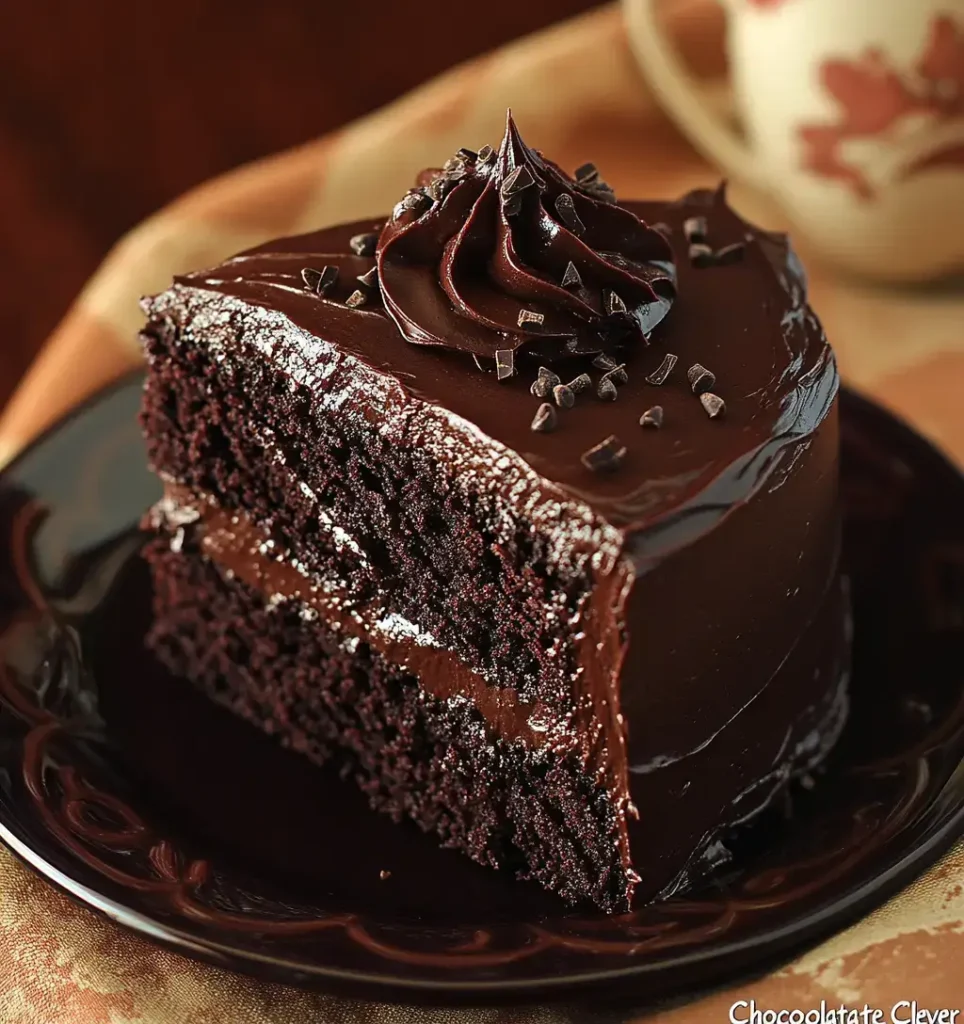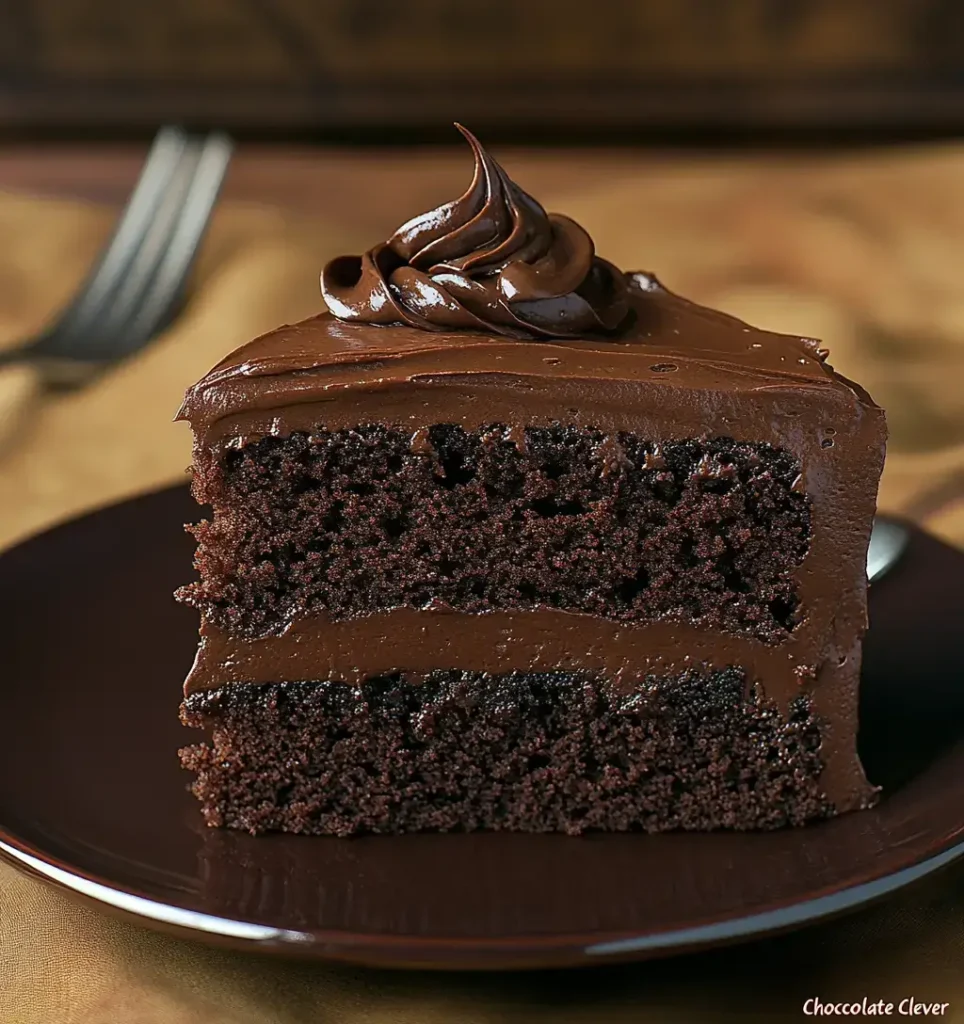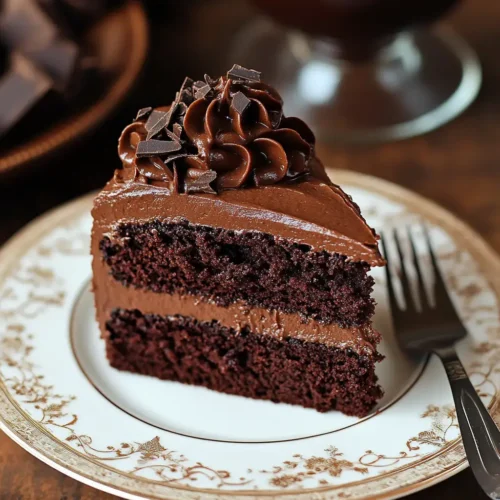Are you craving a rich, decadent chocolate cake but worried it might derail your keto journey? Look no further! This blog post will guide you through making the best keto chocolate cake —a dessert so indulgent, you won’t believe it’s low-carb, sugar-free, and packed with healthy fats. Whether you’re new to keto baking or a seasoned pro, this recipe is designed to satisfy your sweet tooth without compromising your dietary goals. Let’s dive in!
Why This Is the Best Keto Chocolate Cake Recipe
When it comes to keto desserts, finding one that checks all the boxes can be challenging. You want something moist, flavorful, and easy to make—but most importantly, it needs to align with your low-carb lifestyle. Here’s why this recipe stands out as the ultimate keto chocolate cake.
What Makes a Cake Keto-Friendly?
To create a truly keto-friendly cake, we need to focus on three key elements: low carbs, high fat, and zero added sugars. Traditional cakes rely heavily on refined flour and sugar, which are absolute no-nos for anyone following a ketogenic diet. Instead, this recipe swaps those ingredients for healthier alternatives like almond flour, coconut flour, and natural sugar substitutes.
Almond flour serves as the base of this cake, providing a soft, crumbly texture while keeping carb counts low. Coconut flour can also be used in combination with almond flour to absorb excess moisture and enhance structure. For sweetness, we use erythritol or monk fruit sweetener—both of which have minimal impact on blood sugar levels and deliver a taste remarkably similar to regular sugar.
Additionally, this cake incorporates high-fat ingredients like butter, eggs, and heavy cream. These not only contribute to its luscious flavor but also ensure your body stays in ketosis by maintaining a proper macronutrient balance. By carefully selecting these components, we’ve crafted a cake that tastes indulgent yet adheres strictly to keto principles.
For example, almond flour contains fewer carbs than traditional wheat flour and provides a good source of healthy fats and protein. Coconut flour, on the other hand, is highly absorbent, so it helps thicken the batter without adding unnecessary carbohydrates. The sugar substitutes we recommend, such as erythritol, are non-glycemic and won’t spike insulin levels, making them perfect for anyone managing their carb intake.
The result is a cake that’s not only delicious but also aligned with the core tenets of the ketogenic diet. It’s proof that you don’t have to sacrifice flavor or texture to stay true to your health goals.
Rich Flavor Without Compromising Health
One common misconception about keto desserts is that they sacrifice flavor for health benefits. However, this couldn’t be further from the truth when it comes to our keto chocolate cake. The secret lies in using premium-quality cocoa powder—the unsweetened kind—to achieve an intense chocolatey richness that rivals any traditional cake.
We also take extra steps to amplify the flavor profile. A splash of pure vanilla extract adds warmth and depth, while a pinch of salt enhances the overall taste. For those who enjoy a hint of complexity, consider stirring in a teaspoon of instant coffee or espresso powder; this amplifies the chocolate notes without overpowering the dish.
The result? A cake that’s deeply satisfying, perfectly balanced, and utterly guilt-free. Every bite is proof that you don’t have to compromise on flavor to stay true to your keto lifestyle.
Let’s break down some of the flavor-enhancing techniques:
- Cocoa Powder: Use high-quality, unsweetened cocoa powder for maximum chocolate intensity. Dutch-processed cocoa works exceptionally well here because of its smooth, rich flavor.
- Vanilla Extract: Pure vanilla extract elevates the entire dessert, giving it a warm, inviting aroma and subtle sweetness.
- Coffee Powder: While optional, a small amount of espresso powder or instant coffee boosts the chocolate flavor, creating a more complex and sophisticated taste.
- Salt: A tiny pinch of fine sea salt balances the sweetness and enhances all the other flavors, ensuring none of them get lost.
These simple additions transform a basic keto cake into a gourmet experience. Even if you’re not following a strict keto diet, you’ll appreciate the care and attention to detail that goes into crafting this masterpiece.
Perfect for Special Occasions or Everyday Treats
Whether you’re celebrating a birthday, hosting a dinner party, or simply treating yourself after a long day, this keto chocolate cake fits every occasion. Its elegant appearance makes it suitable for formal gatherings, while its simplicity ensures it’s just as delightful for casual snacking.
For special events, consider dressing up the cake with creative decorations. A glossy layer of sugar-free ganache or whipped cream frosting instantly elevates its visual appeal. Top it off with fresh berries, chopped nuts, or even edible flowers for a pop of color and texture. Guests won’t even realize it’s keto-friendly until you tell them!
On the other hand, if you’re looking for a quick treat to brighten your week, this cake is equally versatile. It requires minimal prep time and bakes in under an hour, making it perfect for impromptu cravings. Plus, leftovers store beautifully in the fridge, allowing you to savor multiple slices throughout the week.
Here’s how to adapt this recipe for different occasions:
- Casual Desserts: Keep it simple with a dusting of powdered erythritol or a drizzle of melted dark chocolate. Serve with a dollop of whipped cream for extra indulgence.
- Celebratory Cakes: Layer the cake with sugar-free frosting, decorate with berries and mint leaves, or pipe intricate designs using a piping bag. Add candles for birthdays or festive themes for holidays.
- Meal Prep Snacks: Bake the cake ahead of time, slice it into portions, and store it in the freezer. Pull out a slice whenever you need a quick dessert—it thaws in minutes!
No matter how you serve it, this cake proves that keto-friendly desserts can be both practical and luxurious.
Top-Rated by Keto Baking Enthusiasts
What sets this recipe apart from others online? First and foremost, it’s been tested and approved by countless keto enthusiasts who rave about its moistness, flavor, and ease of preparation. Unlike some dry, crumbly keto cakes, this one boasts a tender crumb and melt-in-your-mouth texture thanks to the careful selection of ingredients and precise baking techniques.
Another standout feature is its adaptability. Whether you’re dairy-free, nut-free, or experimenting with different sweeteners, this recipe offers plenty of substitution options to suit your needs. Readers often praise its foolproof instructions, which make it accessible even for beginners.
In short, this isn’t just another keto cake—it’s the best . And once you try it, you’ll understand why it’s earned such glowing reviews.
Feedback from users includes comments like:
- “This cake tastes just like the real thing!”
- “I can’t believe it’s keto—it’s so moist and chocolatey!”
- “Perfect for my family gatherings where everyone has different dietary restrictions.”
With endorsements like these, you know you’re in good hands.
Key Ingredients for the Ultimate Keto Chocolate Cake
The foundation of any great recipe lies in its ingredients. In this section, we’ll explore the essential components that make this keto chocolate cake truly exceptional.
Almond Flour vs. Coconut Flour
When it comes to keto baking, choosing the right flour is crucial. Two of the most popular options are almond flour and coconut flour, each offering unique properties that affect texture and flavor.
Almond Flour: Made from finely ground almonds, almond flour is prized for its mild, nutty taste and ability to mimic the softness of wheat flour. It’s particularly well-suited for cakes because it creates a light, airy crumb without weighing down the batter. Additionally, almond flour is naturally gluten-free and low in carbs, making it an ideal choice for keto recipes.
Coconut Flour: While less commonly used than almond flour, coconut flour has its own set of advantages. Derived from dried coconut meat, it absorbs significantly more liquid than other flours, resulting in a denser texture. To counteract this, recipes typically require additional eggs or moisture-rich ingredients like heavy cream. Coconut flour is also higher in fiber, which aids digestion and promotes satiety.
For this recipe, we recommend using primarily almond flour with a small amount of coconut flour for stability. This combination strikes the perfect balance between tenderness and structure.
Let’s delve deeper into why these flours work so well:
- Almond Flour Benefits: High in healthy fats, low in carbs, and naturally gluten-free, almond flour supports ketosis while delivering excellent texture. It’s also incredibly versatile, working well in everything from cookies to pancakes.
- Coconut Flour Benefits: Despite requiring more liquid, coconut flour is a powerhouse ingredient. It’s rich in fiber, which helps regulate digestion, and its dense texture pairs beautifully with lighter ingredients like whipped cream or mousse.
By blending these two flours, we achieve a cake that’s both fluffy and sturdy—a rare feat in keto baking.
Sweeteners That Work Best
Sweetening a keto cake poses a unique challenge since traditional sugar is off-limits. Fortunately, there are several excellent alternatives available, each with its own pros and cons.
Erythritol: This sugar alcohol is widely regarded as one of the best sweeteners for keto baking. It has virtually no calories, doesn’t spike blood sugar, and closely resembles the taste and texture of granulated sugar. The only downside? Some people detect a slight cooling sensation when consumed in large quantities.
Monk Fruit Sweetener: Extracted from the monk fruit plant, this natural sweetener is incredibly potent and contains zero carbs. It blends seamlessly into batters and frostings, though it may be slightly pricier than other options.
Stevia: Another plant-based option, stevia is extremely concentrated, so a little goes a long way. Be cautious, however, as some brands leave behind a bitter aftertaste if overused.
For optimal results, we suggest combining erythritol with a touch of monk fruit sweetener. This duo delivers a clean, sweet flavor without any unpleasant side effects.
Choosing the right sweetener is critical for achieving the desired taste and texture. Here’s what to look for:
- Granulated Sweeteners: These mimic the consistency of regular sugar, making them ideal for baking. Erythritol and monk fruit blends are excellent choices.
- Liquid Sweeteners: If you’re concerned about graininess, opt for liquid versions of these sweeteners. They dissolve easily and distribute evenly throughout the batter.
Experiment with different combinations to find what works best for your palate.
Essential Add-ins for Moisture and Flavor
Beyond flour and sweetener, certain ingredients play pivotal roles in ensuring the cake turns out moist, flavorful, and visually appealing.
Eggs: Eggs act as both binders and leavening agents, helping the cake rise and hold together. They also contribute to its richness and golden hue. For best results, use room-temperature eggs to ensure even incorporation.
Butter/Ghee: Creamy, luxurious butter (or ghee) infuses the batter with a velvety mouthfeel and subtle richness. Opt for grass-fed varieties whenever possible for enhanced nutritional value.
Vanilla Extract: Pure vanilla extract adds warmth and complexity to the chocolate flavor. Avoid imitation extracts, as they often contain artificial additives that detract from the cake’s purity.
Heavy Cream/Coconut Cream: These creamy liquids provide much-needed moisture and fat content. Heavy cream works beautifully for non-dairy-free versions, while coconut cream offers a plant-based alternative.
Together, these ingredients form the backbone of a truly irresistible keto chocolate cake.
Each component plays a specific role:
- Eggs: Provide structure, moisture, and aeration. They’re essential for creating a light, airy texture.
- Butter/Ghee: Adds richness and prevents the cake from drying out during baking.
- Vanilla Extract: Elevates the overall flavor profile, complementing the deep chocolate notes.
- Cream: Keeps the cake moist and tender, preventing it from becoming dry or crumbly.
By balancing these elements, you’ll achieve a cake that’s as decadent as it is nutritious.
Optional Mix-ins for Extra Indulgence
While the basic recipe is already divine, adding mix-ins can take it to the next level. Consider folding in sugar-free chocolate chips for gooey pockets of melted goodness. Chopped walnuts, pecans, or almonds add crunch and complement the nutty undertones of almond flour. Alternatively, a dash of cinnamon or espresso powder can deepen the chocolate flavor for those who crave bold, sophisticated tastes.
Feel free to get creative—this cake is highly customizable, so don’t hesitate to experiment with your favorite flavors!
Some fun ideas include:
- Berries: Fold in blueberries or raspberries for bursts of tangy sweetness.
- Nuts: Toasted hazelnuts or macadamias pair beautifully with chocolate.
- Spices: A pinch of cinnamon or chili powder adds warmth and intrigue.
The possibilities are endless, so let your imagination run wild!
Step-by-Step Instructions to Bake Your Keto Cake
Now that you’re familiar with the ingredients, let’s walk through the process of bringing this delicious cake to life. Follow these step-by-step instructions for flawless results every time.
Preparing the Batter
Begin by preheating your oven to 350°F (175°C) and greasing a round or square cake pan with butter or cooking spray. Line the bottom with parchment paper to prevent sticking.
In a large mixing bowl, whisk together your dry ingredients: almond flour, coconut flour, cocoa powder, sweetener, baking powder, and a pinch of salt. Ensure everything is evenly distributed to avoid clumps later on.
Next, crack your eggs into a separate bowl and beat them lightly. Add melted butter, heavy cream, and vanilla extract, then whisk until smooth. Gradually pour the wet mixture into the dry ingredients, stirring gently to combine. Be careful not to overmix, as this can lead to a dense cake.
Once the batter reaches a thick, glossy consistency, transfer it to the prepared pan and spread it out evenly with a spatula. Tap the pan gently on the counter to release any air bubbles.
Baking Tips for Perfect Texture
Place the cake in the center rack of your oven and bake for approximately 25–30 minutes. To check for doneness, insert a toothpick into the center; it should come out clean or with a few moist crumbs attached.
Timing is critical here—overbaking can dry out the cake, while underbaking may leave it too gooey. If you notice the top browning too quickly, loosely cover the pan with aluminum foil to prevent burning.
After removing the cake from the oven, allow it to cool in the pan for 10 minutes before transferring it to a wire rack. Cooling helps the cake set properly and prevents crumbling during frosting.
How to Avoid Common Mistakes
Even experienced bakers encounter hiccups now and then. Here are some tips to troubleshoot common issues:
- Dry Cake: This usually stems from overmixing the batter or omitting enough fat. Stick to the recommended ingredient ratios and handle the batter gently.
- Sinking Center: Underbaked cakes often sink due to insufficient structure. Always test with a toothpick and adjust baking times as needed.
- Crumbly Texture: Xanthan gum can help stabilize gluten-free batters if you find yours falling apart easily. Just a quarter teaspoon is enough for most recipes.
By staying mindful of these pitfalls, you’ll end up with a picture-perfect cake every time.
Cooling and Storing Your Cake
Proper cooling and storage are essential for preserving freshness. Once the cake has cooled completely on the wire rack, wrap it tightly in plastic wrap or store it in an airtight container. Refrigerate for up to five days or freeze for longer shelf life.
To serve, let frozen slices thaw at room temperature for about 30 minutes. Reheat briefly in the microwave for a warm, gooey treat. Leftovers never tasted so good!
Creative Ways to Decorate Your Keto Chocolate Cake
A beautifully decorated cake is sure to impress, whether you’re serving friends or treating yourself. Here are some creative ideas to elevate your keto masterpiece.
Making a Sugar-Free Ganache
Ganache is a classic frosting option known for its glossy finish and decadent flavor. To make a keto-friendly version, heat 1 cup of heavy cream in a saucepan until simmering. Pour it over 8 ounces of chopped dark chocolate (at least 85% cacao) and let it sit for 2–3 minutes. Stir until smooth, then chill briefly to thicken before spreading onto the cake.
Whipped Cream Frosting Options
Whipped cream provides a lighter, fluffier alternative to ganache. Simply whip chilled heavy cream with a tablespoon of powdered erythritol and a splash of vanilla extract until stiff peaks form. Spread generously over the cooled cake for a cloud-like topping.
Topping Ideas for Visual Appeal
Enhance your cake’s presentation with colorful toppings. Fresh raspberries, strawberries, or blueberries add vibrancy and tanginess. Crushed nuts, shredded coconut, or sprinkles made from crushed keto cookies offer textural contrast. For a touch of elegance, garnish with mint leaves or edible gold dust.
Serving Suggestions for Guests
Pair your cake with complementary beverages like coffee, tea, or sparkling water infused with citrus slices. Arrange individual slices on dessert plates alongside small forks for effortless sharing. Watch as your guests marvel at how deliciously keto-friendly it is!
Frequently Asked Questions About Keto Cakes
Still have questions? We’ve got answers! Read on for clarification on some of the most common queries about keto baking.
Can I Substitute Almond Flour with Something Else?
Yes! If you’re allergic to nuts or simply prefer a different option, try sunflower seed flour or tiger nut flour. Both are low-carb, grain-free, and produce similar results. Keep in mind that texture and taste may vary slightly.
How Many Carbs Are in a Slice of This Cake?
Each slice contains approximately 4–6 net carbs, depending on portion size and specific ingredient choices. Always calculate macros based on your exact measurements for accuracy.
Is This Recipe Suitable for Diabetics?
Absolutely! With its low glycemic index and absence of refined sugars, this cake is safe for individuals managing diabetes. Just monitor portion sizes to stay within your daily carb limits.
Can I Make This Cake Ahead of Time?
Definitely! This cake stores exceptionally well in the refrigerator for up to five days or in the freezer for several weeks. Simply thaw frozen slices overnight in the fridge before serving.
Keto Chocolate Cake
Equipment
- Mixing bowls (large and medium)
- Electric mixer or whisk
- 8×8 inch baking pan
- Parchment paper or silicone baking mat
- Spatula
- Measuring cups and spoons
- Knife (for slicing)
Ingredients
- For the Cake:
- 1 1/2 cups almond flour
- 1/2 cup cocoa powder unsweetened
- 1 teaspoon baking powder
- 1/4 teaspoon salt
- 4 large eggs
- 1/2 cup granulated erythritol or preferred keto-friendly sweetener
- 1/2 cup unsalted butter melted
- 1/2 cup heavy cream
- 1 teaspoon vanilla extract
- For the Chocolate Frosting:
- 1/2 cup unsalted butter softened
- 1/4 cup cocoa powder unsweetened
- 1/2 cup powdered erythritol or preferred keto-friendly sweetener
- 1/4 cup heavy cream
- 1 teaspoon vanilla extract
- Optional: Sugar-free chocolate chips for garnish
Instructions
- For the Cake:
- Preheat the Oven : Preheat your oven to 350°F (175°C). Line an 8×8 inch baking pan with parchment paper or grease it lightly.
- Mix the Dry Ingredients :
- In a large mixing bowl, whisk together the almond flour, cocoa powder, baking powder, and salt.
- Combine the Wet Ingredients :
- In a separate bowl, whisk together the eggs, erythritol, melted butter, heavy cream, and vanilla extract until smooth.
- Make the Batter :
- Gradually add the wet ingredients to the dry ingredients, stirring until fully combined. The batter will be thick but smooth.
- Bake the Cake :
- Pour the batter into the prepared baking pan and spread it evenly.
- Bake in the preheated oven for 20–25 minutes, or until a toothpick inserted into the center comes out clean.
- Remove from the oven and let the cake cool completely in the pan.
- For the Chocolate Frosting:
- Prepare the Frosting :
- In a medium bowl, beat the softened butter until creamy. Add the cocoa powder, powdered erythritol, heavy cream, and vanilla extract. Beat until smooth and fluffy.
- Assemble the Cake :
- Spread the frosting evenly over the cooled cake. Garnish with sugar-free chocolate chips if desired.
- Serve :
- Slice the cake into squares and serve. Store leftovers in an airtight container.
Notes
Adjust the sweetness level by adding more or less keto-friendly sweetener based on your preference.
Store the cake in an airtight container at room temperature for up to 2 days or in the refrigerator for up to 5 days. Freeze slices for up to 3 months; thaw at room temperature before serving.
Double the recipe for a larger crowd or to make a layered cake.





